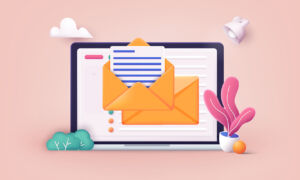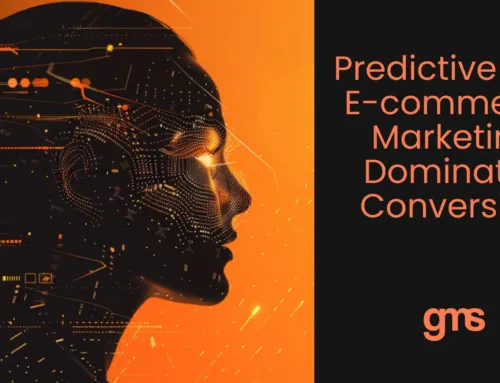Looking to improve your digital marketing strategy? An email campaign should be a key component of your strategy.
Getting an edge in marketing can be challenging, especially if your market is highly competitive.
Your successful rival brands might already be using all the tricks in the book to engage their audiences. If you integrate the best marketing strategies into your business, you can level the playing field.
But that’s not all that you can do.
Believe it or not, many businesses fail to connect with their target markets. And it’s not because of their messaging but because they don’t know how to put their message out there.
That’s why this article will focus on an area of the customer journey that’s often overlooked:
Personalised email marketing.
Email Personalisation 101
Personalised or tailor-made email marketing campaigns enable marketers to send their subscribers the most relevant content. A trademark of this strategy is addressing contacts personally, even though the actual body of the content might be the same in multiple emails.
To make the most out of a personalisation strategy, marketers use collected subscriber data in order to tweak it to each individual’s needs.
For example, emails can address subscribers by name if they use personal information. They can suggest various stores based on the recipient’s location. Reminders can be sent out based on previous purchases, and the list goes on.
The impact of crafting a personalised customer journey through email marketing is far-reaching. Open rates are around 30% higher in personalised emails, and the revenue of a business can increase by up to 760%.
Recent consumer reports have shown that around 80% of customers will choose personalised emails over generic ones. And a recent report by Accenture even indicates that not implementing this strategy can end up costing businesses up to $2.5 trillion worldwide.
Understand that personalisation isn’t a new concept. It’s a well-researched topic in various fields of psychology and has been proven to appeal to human emotion, which is a powerful buying motivator.

Why Email Personalisation is Vital
Although the emotional connection is real, two other things really make personalised email marketing campaigns vital to any business.
First, consumers want to feel in control.
They want to be individuals and treated as such. And personalised experiences like those brought about by personalised emails give them a sense of control.
Furthermore, information overload is very dangerous for businesses.
Promotional emails are a dime a dozen, and customers tend to avoid them. Adding a personalised touch and an emotional tone to an email will enable readers to focus on the message instead of dismissing it.
Of course, there are other reasons to consider personalised campaigns when it comes to eCommerce.
To start with, it can strengthen relationships between brands and customers. It can also generate mass engagement. And it directly speaks about a business’s interest and professionalism towards communicating with its customer base.
Now that you’ve gained a sense of where personalised email marketing fits in your strategy, let’s go over six tips on structuring your message.
The Six Tips
Tip #1: Build Around the Core Elements
Three things make up the foundation of a personalised email:
- The human element
- A timely delivery
- A relevant message
Here’s how it works.
First, one of the goals of personalisation is to humanise a business, thereby creating a stronger emotional bond with the customer.
Next, presenting an offer in a timely manner is key to getting high open and click-through rates. The timely delivery, made possible by subscriber data, ensures that customers get their recommendations when they need them most.
Finally, the more relevant the email, the higher the open rate.
Using varied data points allows marketers to avoid overly promotional emails. Instead, they grab the customer’s attention with something new and exciting.
Tip #2: Use Personalised “From” Field
The “from” field is one of the first things readers see. Sometimes, that carries just as much weight, if not more than the subject line.
Switching the brand’s name with that of a sales representative is recommended here. Emails coming from brand owners or company CEOs are even more likely to be opened. The same goes for messages from influencers or brand ambassadors who are followed by the recipient.
Tip #3: Optimise the Subject Line
The Stanford Graduate School of Business showed in their research that subject lines featuring the subscriber’s name increase the open rate by 20%. It can also lead to a substantial boost in sales and a drop in unsubscribe rates.
It’s also worth noting that the prominent display of subject lines will draw the reader’s attention. Thus, this element deserves more attention to detail when crafting the message.
Tip #4: Include Dynamic Content Offers
This strategy enables marketers to easily change the main content of an email to make it more relevant to the individual reader.
Most big brands use this tactic successfully. It leverages demographic and geographic data to customise an offer for each particular subscriber.
Tip #5: Add Imagery and Visual Elements
A brand’s messaging is more than its content. It includes on-brand imagery and visual elements that help brands get recognised. Thus, this is a powerful personalisation tactic you can use in an email marketing campaign.
Imagery will make emails more lively, maintain brand consistency, and often fill in the details or set the scene. All without forcing the subscriber to go through entire paragraphs of text.
Tip #6: Use Milestone Markers
Remember that a personalised email doesn’t have the sole purpose of showing subscribers the products and services they desire. Another clear intent is to make customers feel appreciated by the brand.
Therefore, some of the emails that deliver the best results are those that address milestone markers.
You can personalise birthday messages, subscriber anniversaries, and other milestones you can extrapolate from the subscriber’s data. Then, you get an opportunity to offer a discount and spark reengagement.
Perhaps you can simply congratulate them on an achievement just to stay in touch and strengthen the relationship.
The possibilities are endless.
Go Beyond Traditional Marketing Limitations
Make no mistake. Personalisation is nothing new and has been used in traditional marketing for decades, especially in direct mail marketing campaigns. But digital channels of communication are far superior and give the modern marketer more flexibility than ever before.
With data collection already being a top priority, personalised email campaigns will enable you to boost the average lifetime value of customers. It will also help you convert leads into long-term paying customers.
Moreover, this doesn’t usually come at an additional cost to your marketing team once you have a proper framework and strategy in place.
On that note, feel free to schedule your free consult with one of our GMS experts if you’re looking for more ways to optimise your eCommerce digital marketing plan.




